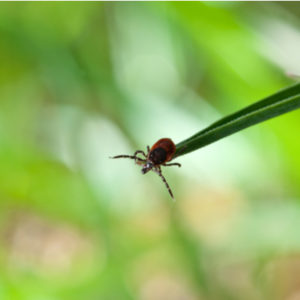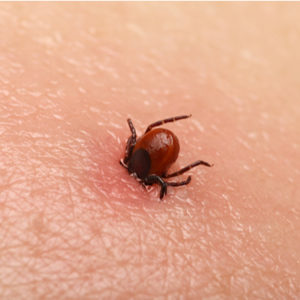When it comes to pests and vector-borne diseases (illnesses spread by animals), 2019 has been a bad year for the United States. This is especially true if you live here in the North East. Diseases like Eastern Equine Encephalitis (EEE), spread by mosquitoes, and diseases spread by ticks, are out of control. If you think we’ll get a reprieve in the fall as temperatures drop, think again. Fall is an incredibly active time for ticks. Luckily, we’ve put together a few fall tick control tips to keep your yard tick-free.
Tick-Borne Diseases
The most important thing to know about ticks is that they can be very dangerous to humans and pets alike. The number of tick-borne disease infections has been on a steady rise over the past decade, and there’s no sign of it slowing down any time soon. Tick-borne diseases make up 95% of all vector-borne infections here in the US. For those of us living in the North East, we’re at the most risk of contracting an illness like Lyme disease than anywhere else in the country. Here in Massachusetts, we have four ticks to keep our eyes open for.
- Blacklegged Tick (Deer Tick): Lyme Disease, babesiosis, Powassan virus, and anaplasmosis.
- Lone Star Tick: Rocky Mountain spotted fever, Southern Tick-Associated Rash Illness (STARI), Tularemia, Ehrlichiosis, Bourbon virus, Heartland virus, and even an allergy to red meat.
- American Dog Tick: Canine tick paralysis, Rocky Mountain spotted fever, and tularemia.
- Brown Dog Tick: Canine ehrlichiosis, canine Babesia, Rocky Mountain spotted fever.
Common Ticks in Massachusetts and the Diseases They Carry:
As temperatures continue to rise and our springs and summers continue to get warmer, wetter, and longer, tick populations will continue to spread into human populations. As if that wasn’t bad enough, scientists continue to find new, dangerous tick-borne diseases.
Fall Tick Control Tips
The best way to control your tick population is with tick prevention techniques. Making your yard as tick-unfriendly as possible will help you maintain a tick-free lawn. Here are a few easy fall tick control tips to turn your lawn into a tick-free zone.
Mow Your Grass

Tall grass is a tick’s dream environment. It offers protection from the elements and predators while also giving them easy access to potential food sources. Ticks will climb to the tip of a blade of grass and wait for their next meal to brush by. The best way to keep ticks from finding a home in your turf is by keeping your grass short. Mow your lawn until the grass stops growing to keep ticks from finding a comfortable home in your lawn.
Remove Your Leaves
Kids aren’t the only things that love a big pile of leaves, ticks are often found hiding in leaves. The insulation keeps them warm and protects them from predators. Remove piles of leaves, sticks, and twigs from your lawn to eliminate this potential tick habitat. Make sure you wear gloves and a long-sleeved shirt while you work and check for ticks afterward.
Trim Your Tree Branches and Shrubs
Do your tree branches and shrubs grow close to the side of your home? If so, then it’s time to trim them. Ticks love to hang out in trees and if those branches get close to the side of your house, then they’ll be attracted to that warmth. The closer they are to the house means they’re that much closer to you and your family. Trim your trees and shrubs away from your house to avoid a potential run-in with a tick.
Keep Yourself Covered
Whenever you work outside or go for a hike, it’s important to protect yourself by keeping yourself covered up. Always wear long-sleeved shirts, long pants, and gloves. It’s a good idea to tuck your boots into your boots or socks to make your skin absolutely inaccessible. Wear light-colored clothing so you can easily spot ticks. If you want to add an extra barrier of protection then invest in bug spray with 20-30% DEET or clothes that have been treated with permethrin.
Always Check Yourself

Anytime you come inside, you should get in the habit of doing a quick tick-check. Pay special attention to your toes, knees, legs, groin, armpits, neck, ears, and hairline. It can take a tick 36-48 hours for it to transmit Lyme disease, so catching the ticks quickly is important.
If you find a tick, then quickly remove it. Use a tick remover or a pair of tweezers to grab the head as close to your skin as possible. Gently pull the tick off and wash the area with soap and water. Never use a match or any other folk remedy to remove a tick. These can actually put you at a greater risk for infection.
Invest in Professional Tick Control
These fall tick control tips will certainly help you out, but investing in professional tick control is a great idea too. Here at Pest Control Unlimited, we are the experts in pest control. Our tick control services will target the ticks where they live and breed, while creating a protective barrier around your property.
For more information, give us a call at (888) 649-9919 or get a free quote here. To stay up to date on the latest tips and tricks, check out our blog. For the latest deals and news, follow us on Facebook and Twitter.

